3 steps to build a skill tree, improve self-awareness and focus, and promote learning ability
Shenzhen Translation Bureau is its compilation team, focusing on technology, business, workplace, life and other fields, focusing on introducing foreign new technologies, new ideas, and new trends.
Editor ’s note: Skill acquisition has always been an integral part of our professional and personal lives. However, for some people, skill acquisition is extremely difficult. Some people do not have clear learning goals, some people do not understand how to classify knowledge, and some may lack correct guidance. This article, the original title is Use Skill Trees to Learn New Skills In a Fun and Painless Way, the author Danny Forest shared in the article the way to build skills through the personal skill tree to easily and worry-free acquisition of skills, I hope to inspire you .
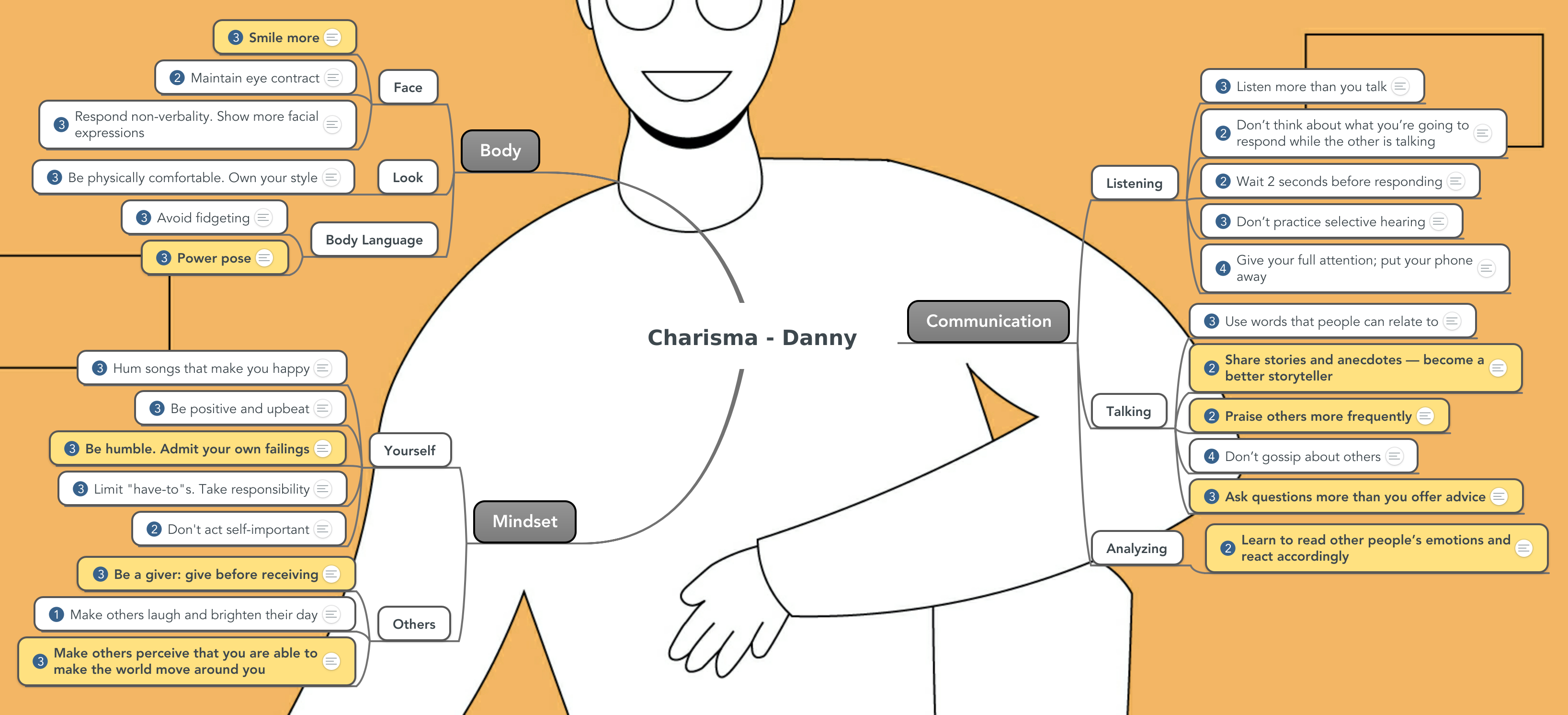
Image source: Danny Forest
When I started to take seriously and study personal learning, I asked hundreds of people in different fields the same question: What did you encounter during the learning process? Pain points?
After summarizing their answers, there are roughly the following pain points:
Learning is too difficult for me
I do n’t know what to learn now and in the future (#)
In order to achieve the established learning goals, it is difficult to find the most effective learning resourcesSource (#)
It is difficult to assess whether you have achieved the set learning goals (#)
I do n’t know how to apply the knowledge learned through learning to practice (#)
Sometimes it is difficult to clarify your learning goals
For the purpose of knowledge retention and later retrieval, it is difficult to classify knowledge (#)
In the process of applying the knowledge learned, it is also difficult to maintain consistency
The cost of learning is not low
Lack of proper guidance from others or other channels
Ca n’t clearly assess the effects and impact of learning
It is difficult to cater to the learning habits and abilities of others different from themselves
Do you also encounter these pain points during the learning process? If you want to make a change, do you know what you can do?
For me, what I have been using for the past two years has been to build a personal skill tree. In fact, the process of writing this article is also a manifestation of building a skill tree.
The goal of building a personal skill tree is mainly to solve the five major pain points of the above-mentioned pain point “#”.
In this article, I will share with you three questions:
First, what is a skill tree?
Second, why build a personal skill tree?
Third, how to build a personal skill tree?
What is a skill tree?
The so-called skill tree is actually a visual representation of the sub-knowledge and skills needed to learn a knowledge or skill through a tree diagram (or mind map) Build it out.
As far as the personal skill tree is concerned, it may never end, you can continually add content to the personal skill tree, such as adding new items of knowledge and skills, record yourself Learning progress, adding various learning resources, etc.
Specifically, I will illustrate with the following two examples.
Biking
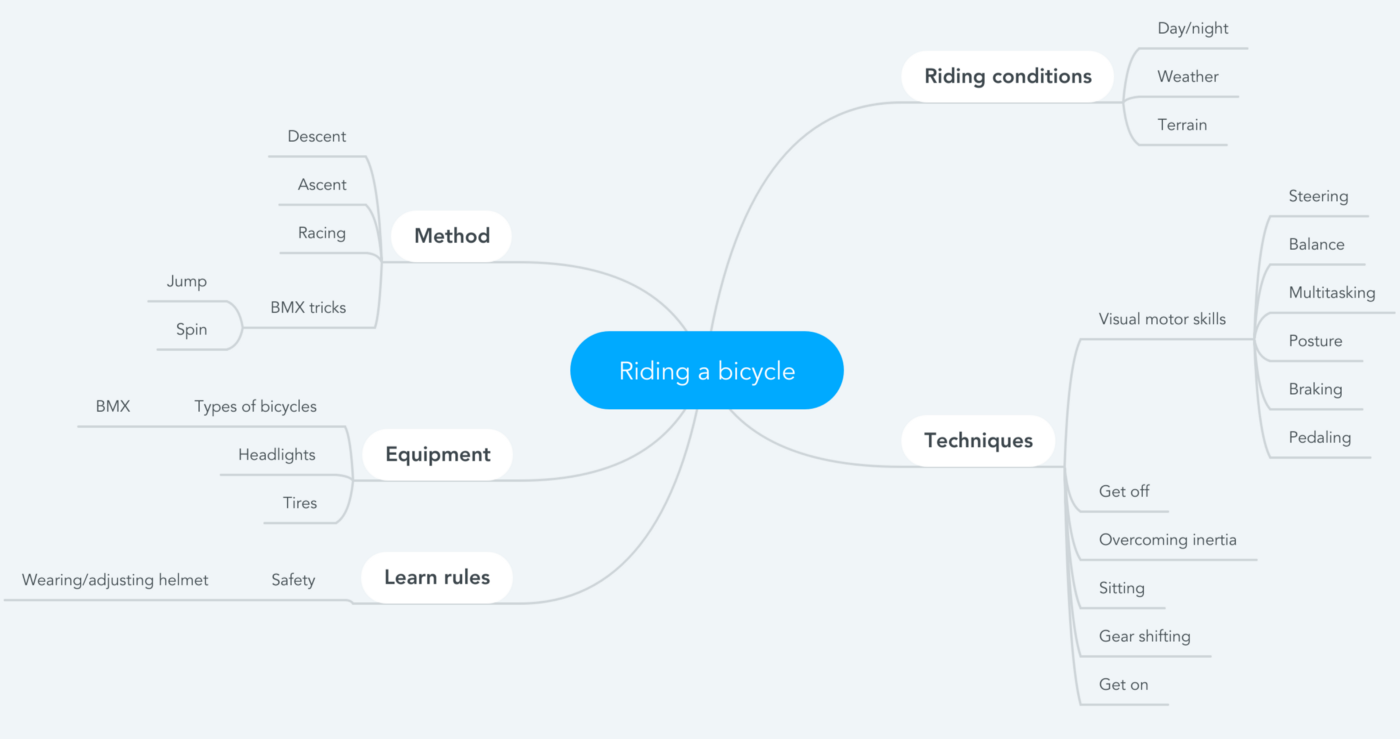
In terms of cycling, you may need to understand and master related theories, tools and equipment, riding rules, Riding conditions and environment, and related method skills.
In terms of these itemized knowledge and skills, more itemized knowledge and skills can be extended.
Learn to play Ukulele
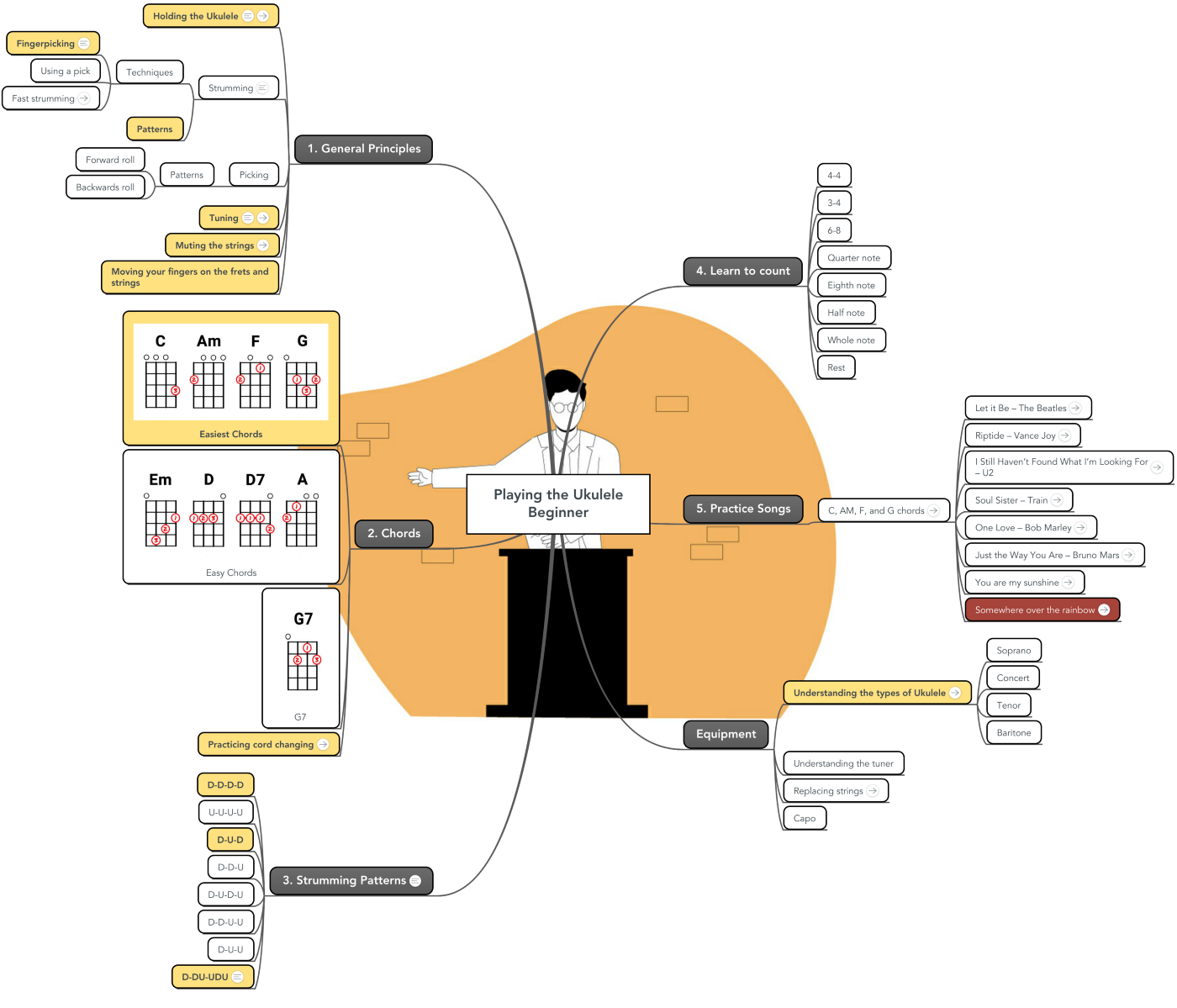
In terms of learning to play Ukulele, you may need to master general rules, chords, fingerstyle patterns, how to count beats, get started and understand Ukulele and many more.
In terms of these sub-knowledges and skills, more sub-knowledge and skills can also be extended. For example, in terms of understanding Ukulele, it can include understanding different types of Ukuleles, demodulator and capo, and how to change strings.
Why build a personal skill tree?
In terms of the skill tree mainly solving the aforementioned five major pain points, specifically, it is mainly reflected in three different aspects:
Skill trees can improve self-awareness
Skills tree can keep you focused
The skill tree can guide you to learn correctly
Improve self-awareness
In terms of improving self-awareness, the skill tree mainly solves the following two pain points:
Not sure what to learn now
I do n’t know how to assess whether I have achieved the set learning goals
Building a personal skill tree can improve your self-awareness because it can force you to further understand and think about what you have mastered before and need to strengthen the improved sub-knowledge skill.
When you are building a personal skill tree, you need to think and plan all relevant sub-items and skills in the form of a tree diagram or mind map, and also mark the individual ’s current sub-items Proficiency or proficiency in knowledge and skills.
According to my personal experience, I suggest that before starting to build a personal skill tree, you can consider the prerequisite knowledge and skills required to master this knowledge or skill.
In terms of cycling, it includes learning to walk, mastering balance, and leg coordination.
If you ca n’t even walk, then you will definitely not be able to ride a bicycle. In addition, you also need to master your body balance to a certain extent, while coordinating your legs. These three aspects are indispensable, otherwise, you may not learn to ride a bicycle.
Stay focused
Once you have done the previous preparations well and at the same time have an understanding of your proficiency in various sub-items of knowledge and skills, the next thing you need to confirm is, Which part of your time should be spent on.
By maintaining personal focus in a certain area, the main pain point that the skill tree solves is: I do n’t know what to learn in the future.
For what part of my skill tree should I focus on, I often like to use the 28th law (Pareto’s law) to help me make decisions. In a nutshell, the 28th law I talk about is to affect 80% of results through 20% of actions.
First, you need to be clear about what kind of results you want.
When I first planned to play Ukulele, my goal was to learn to play Over the Rainbow.
During my groping process, I found that the whole song used only five chords and one finger mode. If I only master these five chord and finger modes, then I have 80%Grip can learn to play this piece.
Actually, for you, you can refer to the 28th law to keep yourself focused while learning any skills.
Guide correct learning
Once you can find and stay focused, you can start thinking about planning and execution.
For guiding individuals to learn correctly, the skill tree mainly solves the following pain points:
I do n’t know how to apply the knowledge learned to practice
For the purpose of knowledge retention and later retrieval, it is difficult to classify knowledge
The skill trees I listed earlier are simple examples. You also need to add learning materials suitable for you that you have used or plan to use.
For this part of materials or resources, you can use various search engines with the help of “How to learn …” “The best way to learn …” “Introduction / Intermediate / Professional level … “and other topics or keywords to search for relevant information.
From these search results, be sure to pay attention and think about the learning resources that may be useful in your later learning process. Of course, for the knowledge or skills you want to learn, you can also ask them if you have professionals who know you.
As far as my personal advice is concerned, I recommend that you make sure to balance the various learning resources, which can be achieved by reading, watching relevant videos, and hands-on practice. .
How to build a personal skill tree?
Of course, you can always choose to draw your skill tree with paper and pen. But in this article, I will share with you the use of mind mapping toolsTo build your own skill tree. For myself, I prefer to use MindMeister.
When using mind mapping tools to build a skill tree, you can refer to the following three steps.
Step 1: List concepts, facts and processes
In the book Ultra Speed Learning (Ultralearning), author Scott H. Young defines concepts, facts and processes as follows:
Concept : Any content that requires understanding .
Facts : Any content that requires memory .
Process : Any content that requires practice .
When you build your personal skill tree for the first time, categorize as much of this information as possible in the column blank list, so that you can analyze and think from a more comprehensive perspective This personal skill tree.
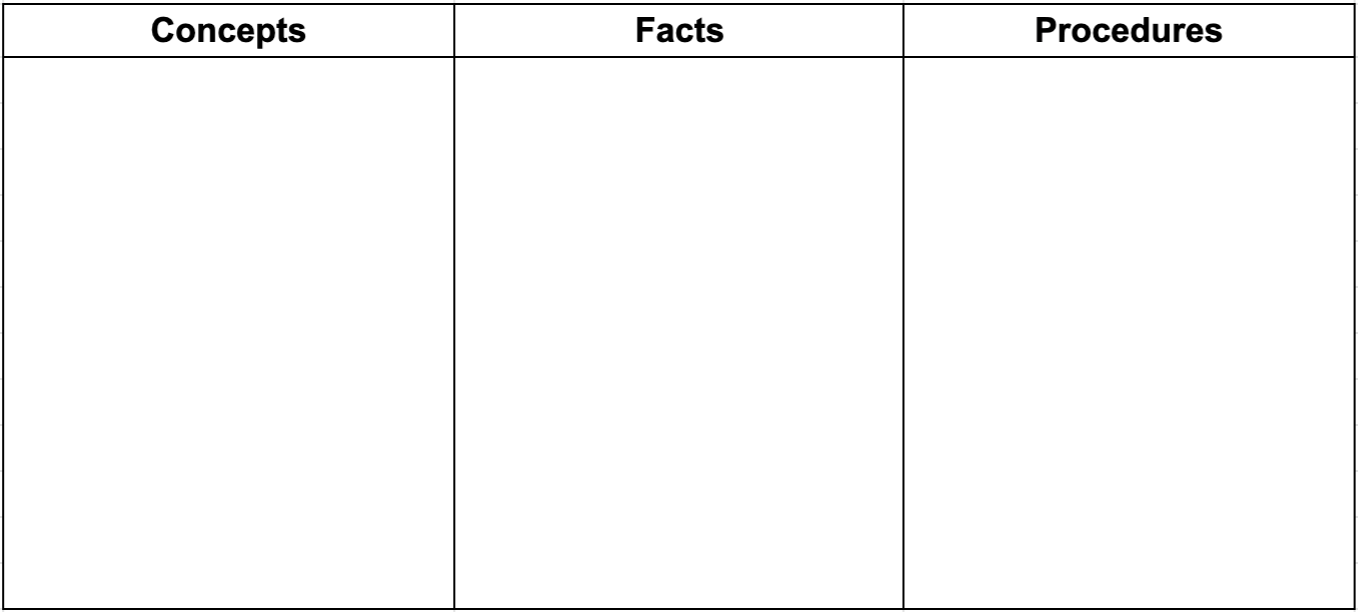
At the same time, you can invite others to participate in this process, and you must learn to use search engines and other tools and channels to explore new discoveries.
For example, during team discussions, we often thinkDimensional collisions come up with many new ideas that we alone might not think of.
In this case, we usually use two minutes to start brainstorming before we get together and share and exchange ideas with each other. When you hear others sharing ideas that you might not have thought of, you will feel that the process is worthwhile and meaningful; of course, vice versa.
Understanding such exercises with others will also allow you to clarify your own thoughts and make your thoughts and goals clearer.
Step 2: Build a personal skill tree
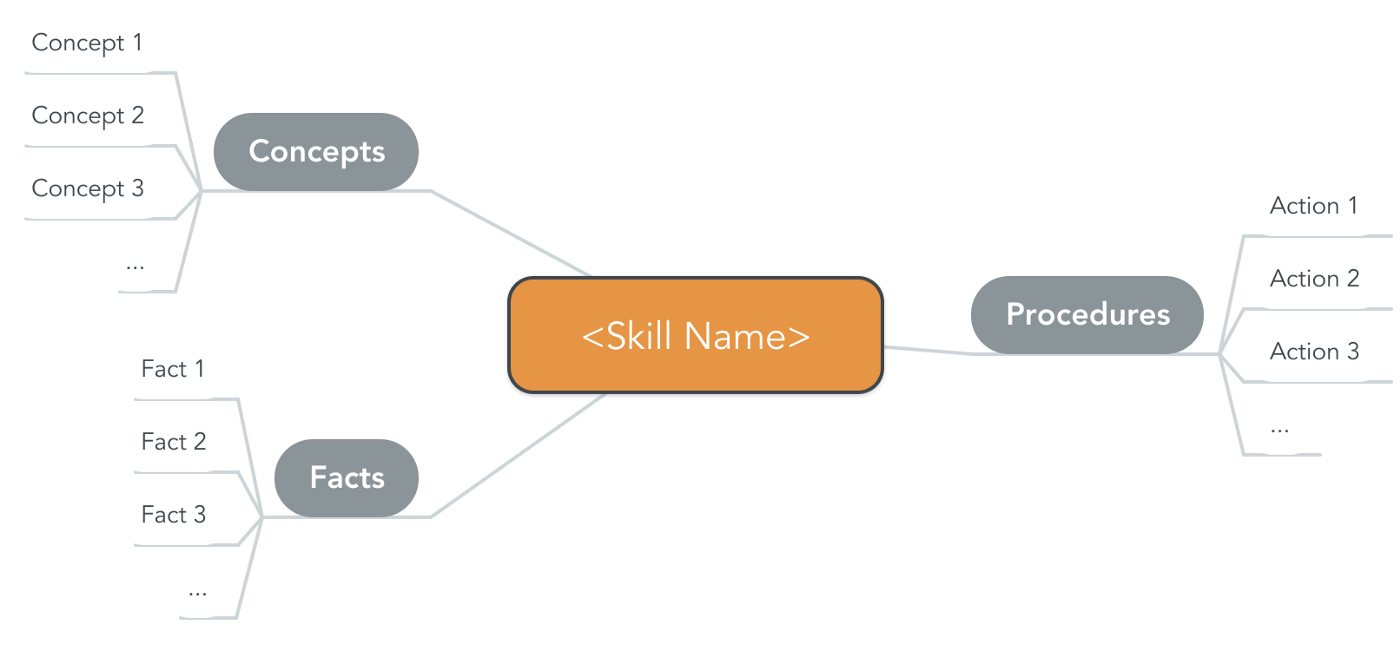
My personal skill tree usually starts with the template form in the picture above.
If we want to rebuild the skill tree about cycling based on this template, then I will build it like the picture below.

From the above picture, you can find that in the skill tree with the theme of cycling, I have listed three sub-items of concept, fact and process.
Taking concepts as an example, I have listed the contents of headlights, tires, off-road bicycle (BMX), safety, wearing / adjusting helmets, getting off, getting on, etc .; For example, I have listed acceleration, steering, balance, multi-tasking, posture, brakes, pedals, etc.
By analyzing the above skill tree, I believe you can definitely find some established patterns from it. You can also understand that there is a certain reason why some content is integrated.
In my previous team workshop, we also integrated the content in the skill tree as shown below:

In the skill tree where the theme is still cycling, the left sub-items include riding conditions and environment, equipment, learning rules, and the right are tips.
Do you think such an architecture is more organized?
In the picture, I deliberately placed the content related to the process / behavior on the right. These are sub-skills that require constant practice, including basic skills, visual motor skills, methods and methods. The left side is the content that needs to be studied and further studied in the beginning of the learning and learning process.
Finally, I also like to add an additional step: highlight the content that I need to pay attention to in the skill tree.
For myself, I require myself to spend at least 15 hours a month to learn new skills. When I open my skill tree, I will quickly pay attention to these highlights, and try to let me spend 15 hours on these aspects.

In short, highlighting the content in the skill tree will allow you to further maintain your focus on core issues while being aware of all the content you need to learn.
Step 3: Self-evaluation and sharing
This last step is critical. After you build a personal skill tree and become more clear about the various skills you need to learn, you also need toScore each skill on your proficiency.
Specifically, I use the following 0 to 4 points rating system:
0 points, which means I do n’t know anything.
1 point, that is, I am just a beginner.
2 points, that is, my level is OK.
3 points, that is, I am still good at it.
4 points, that is, I understand it, no need to learn anything.
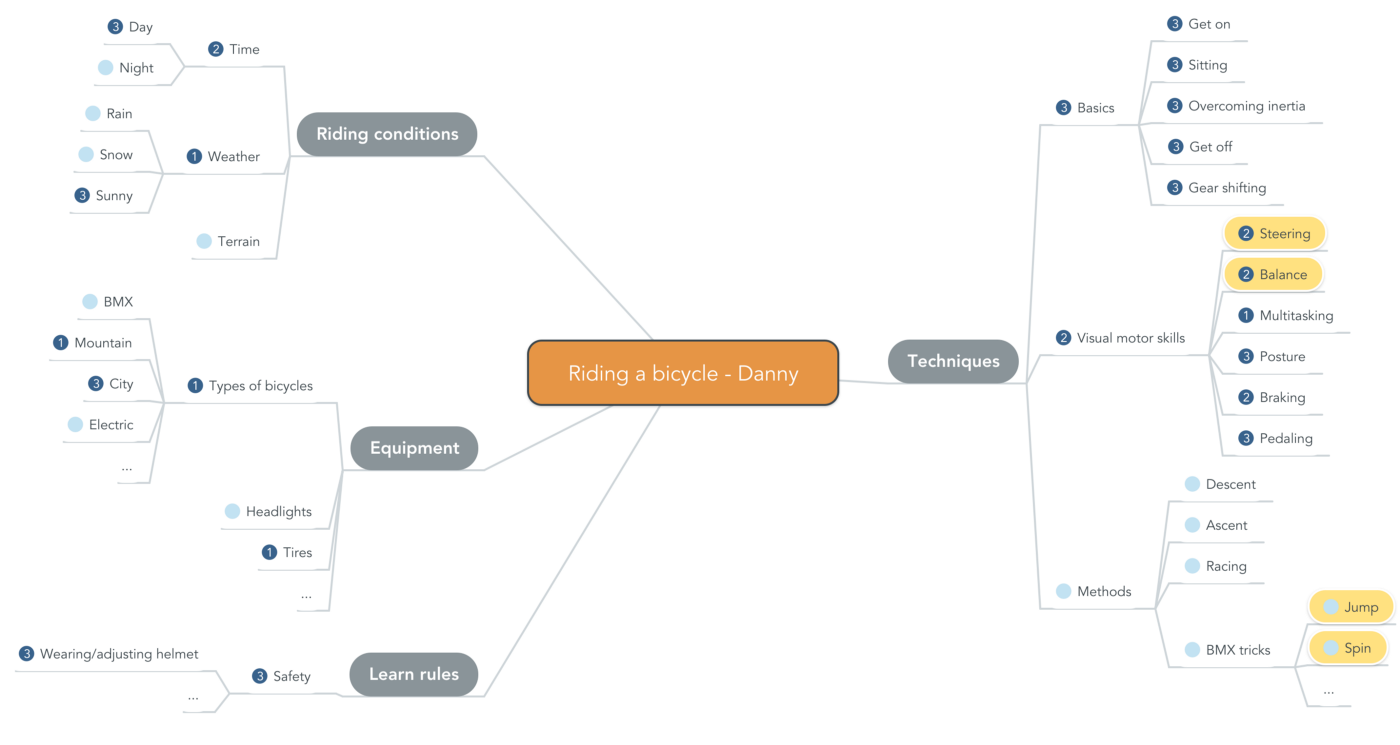
My personal strategy is to score from the bottom. For the upper layer, I will only calculate an average score based on the lower layer score.
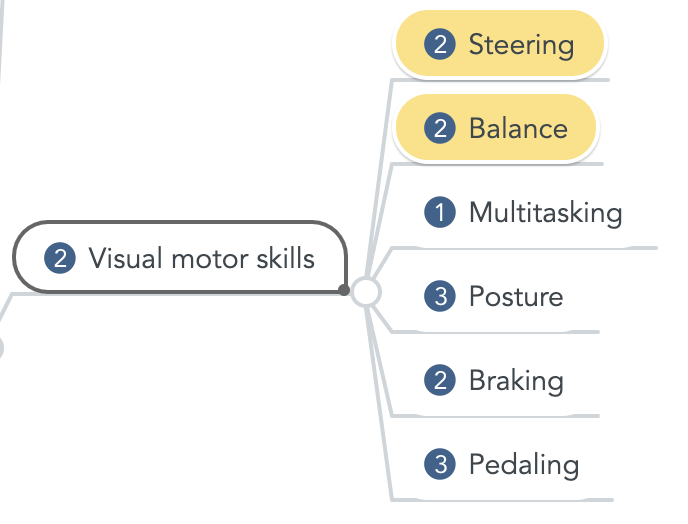
For example, according to the above picture, I will first score the sub-skills, such as turning 2 points, balancing 2 points, etc. Wait. When I finish scoring these sub-skills, I will score the last visual motor skill. Specifically, I calculated it like this:
(2 + 2 + 1 + 3 + 2 + 3) / 6 ≈2
So, I rate this item 2 points. I generally do not round according to the rounding method, but more based on personal feelings.
Finally, I have two more ideas to share with you:
Share your skill tree with friends, partners, colleagues, or family members around you and invite them to divide your points from their personal perspective Skills are scored. Sometimes, our evaluation of ourselves in certain areas is not necessarily the evaluation of us in the eyes of others.
In addition, it is best to make two versions of the skill tree. One version is for the status quo, and the second version is the expectation after learning.
Written at the end …
Actually, learning new skills is completely easy and fun, without any worries.
I have been using the skill tree for the past two years, and many friends around me are using it. In general, based on the summary and summary of my communication with hundreds of people, building a personal skill tree can at least solve the following pain points :
Not sure what to learn now and in the future
In order to achieve the established learning goals, it is difficult to find the most effective learning resources
I do n’t know how to assess whether I have achieved the set learning goals
I do n’t know how to apply the knowledge learned to practice
For the purpose of knowledge retention and later retrieval, it is difficult to classify knowledge
In addition, in addition to the ease and fun in the process of building the skill tree, it can also promote the above three aspects:
Improve self-awareness
Stay focused
Guide correct learning
Once you are used to learning skills through skill trees, you will find that this method is not difficult at all. Specifically, you only need to use the following three steps to complete the construction of the skill tree.
Step 1: List concepts, facts and progress
Step 2: Build a personal skill tree
Step 3: Self-evaluation and sharing
By sharing my personal experience, I also hope this method will help you learn the skills you always wanted to learn. Through this method, I learned some skills that I never thought I could learn, such as painting, salsa dancing, arranger, ukulele, etc.
Total